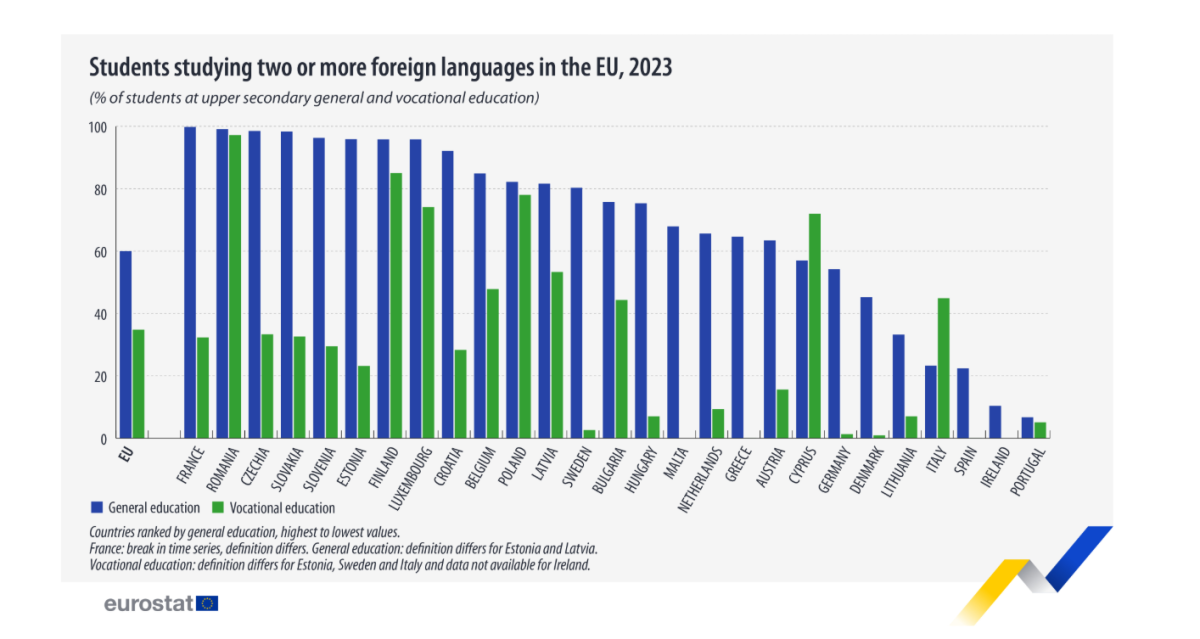Only 6.7% of students in Portugal learn two or more languages in secondary school, putting the country well below the European average of 60%, according to data released by Eurostat.
This result places the country at the bottom of the table, along with Ireland and Spain, and contrasts with the reality of several Member States where this practice is nearly universal.
According to Público, citing the Eurostat report, the percentage recorded in Portugal represents a slight decrease compared to 2022, down 0.8 percentage points. Among the countries with the highest values, France (99.8%), Romania (99.1%), and the Czech Republic (98.5%) top the list. In vocational education, the difference is even more significant. Only in countries like Romania (97.2%) or Finland (85%) do most students learn two or more languages, while Malta, Spain, and Greece have a residual percentage.

In Portugal, English is by far the most studied language, encompassing 96% of students in science and humanities programs and 80.1% in vocational education. In regular education, Spanish ranks second (27.1%), followed by German (21.2%), French (20.8%), and Italian (3.2%). In vocational education, German (18.1%), French (14.1%), Spanish (6.6%), and Russian (2.3%) occupy the following positions.
The national curriculum requires English from grades 1 to 9, but from high school onward, only one foreign language is required in the general education of most programs. In the case of the Language and Literature course, it is possible to study two languages, but this is the exception that proves the rule – most students finish high school without regular contact with more than one foreign language.
















There must be some confusion here, since English and French or German are compulsory between the 7th and 9th school years, corresponding to the 3rd cicle.
By Diogo F. from Madeira on 26 Aug 2025, 20:00
You are out for lunch! Must be looking at yourself!
By A L Fernandes from Other on 28 Aug 2025, 17:24